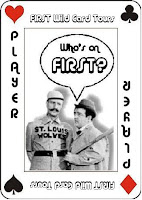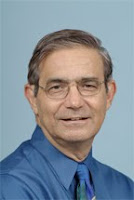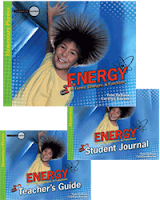 It is time for a FIRST Wild Card Tour book review! If you wish to join the FIRST blog alliance, just click the button. We are a group of reviewers who tour Christian books. A Wild Card post includes a brief bio of the author and a full chapter from each book toured. The reason it is called a FIRST Wild Card Tour is that you never know if the book will be fiction, non~fiction, for young, or for old…or for somewhere in between! Enjoy your free peek into the book!
It is time for a FIRST Wild Card Tour book review! If you wish to join the FIRST blog alliance, just click the button. We are a group of reviewers who tour Christian books. A Wild Card post includes a brief bio of the author and a full chapter from each book toured. The reason it is called a FIRST Wild Card Tour is that you never know if the book will be fiction, non~fiction, for young, or for old…or for somewhere in between! Enjoy your free peek into the book!
You never know when I might play a wild card on you!
Energy: Its Forms, Changes & Functions
***Special thanks to Robert Parrish of New Leaf Publishing Group for sending me a review copy.***
 Tom DeRosa left seminary and the church thinking he was throwing away his faith, but in reality he found a new religion: evolution. In 1978, Tom accepted Jesus Christ as Lord of his life. Soon after he studied biblical creation at Coral Ridge Presbyterian Church and came to the conclusion that a lack of knowledge of the biblical account of creation is greatly responsible for keeping many people from Christ. His commitment to breaking down those barriers is what led Tom to form Creation Studies Institute in 1988.
Tom DeRosa left seminary and the church thinking he was throwing away his faith, but in reality he found a new religion: evolution. In 1978, Tom accepted Jesus Christ as Lord of his life. Soon after he studied biblical creation at Coral Ridge Presbyterian Church and came to the conclusion that a lack of knowledge of the biblical account of creation is greatly responsible for keeping many people from Christ. His commitment to breaking down those barriers is what led Tom to form Creation Studies Institute in 1988.
 Carolyn Reeves, Ph.D. and her husband make their home in Oxford, Mississippi where they are active members of North Oxford Baptist Church. Carolyn retired after a 30-year career as a science teacher, finished a doctoral degree in science education, and began a new venture as a writer and an educational consultant.
Carolyn Reeves, Ph.D. and her husband make their home in Oxford, Mississippi where they are active members of North Oxford Baptist Church. Carolyn retired after a 30-year career as a science teacher, finished a doctoral degree in science education, and began a new venture as a writer and an educational consultant.
The Main Book Product Details:
List Price: $12.99
Reading level: Ages 9-12
Paperback: 88 pages
Publisher: Master Books (September 30, 2009)
Language: English
ISBN-10: 0890515700
ISBN-13: 978-0890515709
The Student Journal Product Details:
List Price: $4.99
Reading level: Ages 9-12
Paperback: 48 pages
Publisher: Master Books; Student edition (June 30, 2009)
Language: English
ISBN-10: 0890515719
ISBN-13: 978-0890515716
The Teacher’s Guide Product Details:
List Price: $4.99
Paperback: 48 pages
Publisher: Master Books; Tch edition (September 30, 2009)
Language: English
ISBN-10: 0890515727
ISBN-13: 978-0890515723
AND NOW…THE FIRST CHAPTERs:
Think about this. Ella understands that light is a form of energy, but she is having trouble with the idea that light energy cannot be created or destroyed.
“Look,” she told her aunt, who is a science teacher. “When I flip the switch and turn off the lights, I cause all the lights in the room to go away.” She demonstrated and made the room very dark.
“Now look what happens when I turn the light switch back on. The room fills with light again. Didn’t I just create and destroy the light in the room?” she asked.
“No, you certainly did not,” her aunt said. “All you did was demonstrate how energy can change from one form into another.”
Let’s look at some examples of how energy changes from one form to another in this lesson.
German-born Albert Einstein was awarded the 1921 Nobel Price in Physics. His studies of light transformation helped to base his discovery of the photoelectric effect.
The Investigative Problems:
What are examples of energy?
Can one form of energy change into another form of energy?
Gather These Things:
1.5-vold dry cell
5-inch pieces of electric wire
Small wooden boards
Assorted rubber bands (different thicknesses, but same length)
1.5-volt light bulb
Sandpaper
Sturdy shoe box
Procedure & Observations
Electric energy ito light and head energy: Take a 1-5-volt dry cell, a five-inch wire, and a light bulb. Test different combinations until you get the light bulb to come on. Show your teacher when you are successful. Make a drawing to show how you connected everything.
Feel the light bulb. Can you tell if it has gotten any warmer? (Note: This is a small amount of head and it may not be easy to detect.)
Mechanical energy to heat energy: Rub a piece of sandpaper quickly over a board several times. Feel the sandpaper and the board. What kind of energy is produced?
Mechanical energy to sound energy: Remove the cover from a sturdy box and cut three groves on opposite edges of the box. Now choose three rubber bands of equal length, but each with a different thickness. Stretch the rubber bands around the box, fitting each into one of the grooves. Pluck each rubber band. Observe that it is vibrating. Listen for a sound. Repeat for each rubber band. Compare the pitch made by the different rubber bands. Record your observations.
The Science Stuff
Energy is what enables matter to move or to change. Energy is found in many different forms, such as heat, light, electricity, mechanical (the energy in moving things), sound, nuclear, and chemical. One form of energy can be changed into another form of energy. Still, the total amount of energy never changes. This means that energy cannot be created or destroyed. These ideas are expressed in one of the most important laws in all of science – the law of conservation of energy.
These activities illustrate some of the main forms of energy. Each activity shows one form of energy being changed into another form of energy. Electrical energy changed into light and heat, mechanical energy changed into heat, and mechanical energy changed into sound.
In the first activity, when the equipment was wired together correctly, an electric circuit was completed. An electric current then moved through the dry cell, wires, and light bulb. As the electric current moved through the light bulb, electric energy changed into light energy and heat energy.
This activity illustrates another important concept about energy. It shows that energy can be transferred from one place to another. Much of the earth’s energy is transferred from the sun to the earth.
Remember the conversation between Ella and her aunt? When Ella flipped the light switch, the electric current began to move through the wires and the light bulb. Inside the light bulb, electric energy changed into light and heat energy, which is the same thing that happened in your activity with electricity. When she turned the lights off, the objects in the room absorbed the heat and light energy. (This is a small amount of energy, and you probably couldn’t detect it without some sophisticated equipment.)
When you rubbed a board with sandpaper, your motion produced mechanical energy. This motion produced friction between the sandpaper and the wood, causing the molecules to move faster. As a result, both the sandpaper and the wood became hotter. Thus, the mechanical energy of the moving sandpaper changed into heat energy.
You were also the source of motion when you plucked the tight rubber bands, causing them to vibrate. Sound is produced when a force causes something to vibrate and produce sound waves. Sound energy is carried in waves.
Making Connections
Another way in which mechanical energy can produce sound waves is by tapping on a table. Tapping on the table causes the table to vibrate in the same way plucking on the rubber bands caused them to vibrate. Sound waves actually travel faster through the table than through the air. You can put your ear next to the table and hear the tapping sounds clearly. You can also raise your head and hear the sounds as the sound waves pass through the table and then through the air.
When electrical energy passes through a light bulb, it is changed into light energy and heat energy. Even though the heat energy is unwanted, it is still part of the electric bill. Engineers try to design light bulbs that increase the amount of light and decrease the amount of heat produced. Some progress has been made, but light bulbs continue to produce unwanted heat.
Dig Deeper
Start with the energy being given off from a TV or a radio in your home. Try to figure out where this energy comes from. See how far back you can trace the energy changes. This gets a little complicated, so get ad good reference book to help you.
What is the difference between an electric motor and an electric generator? They basically contain the same parts and are built the same way. However, an electric motor changes electric energy into mechanical energy, and an electric generator changes mechanical energy into electric energy.
In 1905, Albert Einstein proposed a theory that altered the law of conservation of energy. He said that matter can be changed into energy, and energy can be changed into matter, but the total amount of matter and energy in the universe remains the same. How was Einstein’s theory shown to be true?
What Did You Learn?
Give two examples of how one form of energy can change into heat energy. Give another example of an energy change.
List two ways in which energy does work for us.
The following list contains examples of forces, properties of matter, and forms of energy. Underline all the examples of forms of energy: inertia, heat, density, buoyancy, electricity, lift, weight, chemical, push, and nuclear.
Define mechanical energy and give an example.
What kind of energy can be quickly provided by a battery?
What is the law of conservation of energy?
Give an example of when an unwanted form of energy is produced in a device.
What happens to a roomful of light on a dark night with the lights are turned off?
Was energy transferred from the batter to the light bulb when an electric circuit was completed?
My Thoughts:
As stated in the Forces & Motion set review and the Matter set review , I recommend purchasing the complete set that includes the student journal and teacher’s guide in addition to the book. The teacher’s guide gives you teaching tips, additional material, and answers to the questions in the book. It also gives a fyi grading guide in case you need help with grading. The student journal is basically a lab book for the student to record everything from the lessons and lab work activities. It covers The Activity: Procedure and Observations, Thinking About, Dig Deeper (extra activities for further learning), What Did You Learn, and Stumper’s Corner (student writes 2 questions about the topic that are meant to “stump” someone) for each of the 20 activities.
In this set, students will be working on elementary physics on the subject of energy. They will cover topics such as stored and active energy, heat energy, wind and water energy, electricity, and many more. Munchkin likes that the experiments come first followed by the lesson. The dig deeper portion allows her to get a more in depth understanding of the concepts being presented. The glossary in the back of the book helps with those terms she is not familiar with during the reading/activities. The student journal helps her stay focused on the task at hand. The student journal includes pages for extra notes and an appendix which contains pinwheel pattern for when you make a windmill.
I like that everything is laid out for the teacher. You are told up front all the supplies needed for the lesson in the “Gather These Things” clipboard. If you have the supplies needed, you can quickly look over the lesson the night before and easily teach the lesson the next day. Or, if you have an older child, they can do the lesson completely on their own. The lessons begin with observations and experiments followed by the lesson which captures a child’s attention. For the most part, the supplies used in the experiments are household items or things that can be inexpensively purchased at a local hardware store. There are a few items that are more specialty items that can be purchased through a teacher’s supply store.
We will be using this set as part of our science curriculum as way to reinforce or introduce concepts. You could use this as a science core by adding more in depth study into the concepts covered. (You could use the the “Dig Deaper” section to accomplish this.) While this set is geared towards grades 3-6, you could beef it up for higher grades.
I received the Energy set as part of the FirstWildCard Tour for the purpose of this review. No other compensation was received. All opinions are my own.


